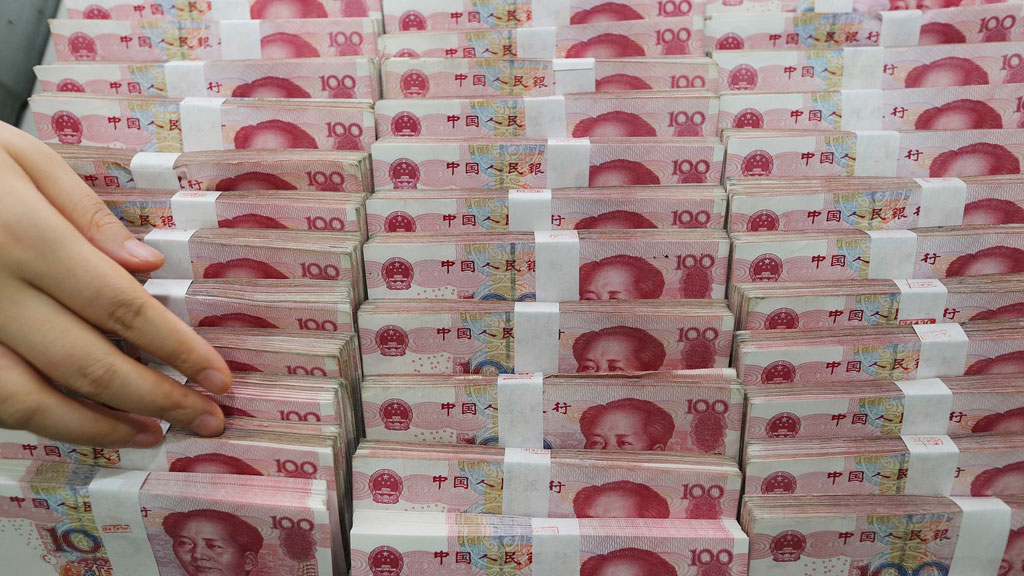 SHANGHAI: China's yuan eased against the US dollar on Monday as companies stocked up on the greenback, which was weakened by worries about trade tensions between the world's two biggest economies.
SHANGHAI: China's yuan eased against the US dollar on Monday as companies stocked up on the greenback, which was weakened by worries about trade tensions between the world's two biggest economies.
The global dollar index, which measures the unit against six other currencies, fell to 89.354 early in the day, the lowest level since Feb. 20. It edged up to 89.401 at midday.
Worries about trade strife prompted investors to sell Chinese stocks on Monday, extending losses in the equity market. But yuan traders said the Chinese currency is unlikely to fall much in the near term, and they do not think the government would use a weaker yuan as a weapon in a trade war.
The Wall Street Journal, citing sources, reported on Monday that the United States and China have quietly started negotiating to improve US access to Chinese markets.
Prior to market opening, the People's Bank of China (PBOC) set the yuan's midpoint rate at 6.3193 per dollar, 79 pips or 0.13 percent firmer than Friday's fix of 6.3272.
In the spot market, the onshore yuan opened at 6.3100 per dollar and at midday was changing hands at 6.3148, or 13 pips weaker than the previous late session close.
Some market watchers say that if a full-scale trade war opens, the yuan will feel some appreciation pressure.
"The looming trade tension may be viewed by the market as the catalyst for RMB to appreciate further," Tommy Xie, economist at OCBC Bank said in a note on Monday, indicating he thinks China should resist any such pressure.
Yi Gang, the PBOC's new governor, reiterated on Sunday that the authority will keep the Chinese currency basically stable while letting the yuan exchange rate play a role in stabilising the economy.
The appointment of Yi to succeed his PBOC boss Zhou Xiaochuan was widely considered a sign of monetary policy continuity.
The Chinese currency rose 0.25 percent versus the greenback last week, but was largely flat on a trade-weighted basis against a basket of its trading partners' currencies, according to official data from the China Foreign Exchange Trade System (CFETS).
The index, published on a weekly basis, stood at 96.11 last Friday compared with 96.12 a week earlier.
The Thomson Reuters/HKEX Global CNH index, which tracks the offshore yuan against a basket of currencies on a daily basis, stood at 97.11, firmer than the previous day's 97.04.
The offshore yuan was trading 0.10 percent firmer than the onshore spot at 6.3087 per dollar.
Offshore one-year non-deliverable forwards contracts (NDFs), considered the best available proxy for forward-looking market expectations of the yuan's value, traded at 6.42, 1.57 percent weaker than the midpoint.
One-year NDFs are settled against the midpoint, not the spot rate.




















Comments
Comments are closed.